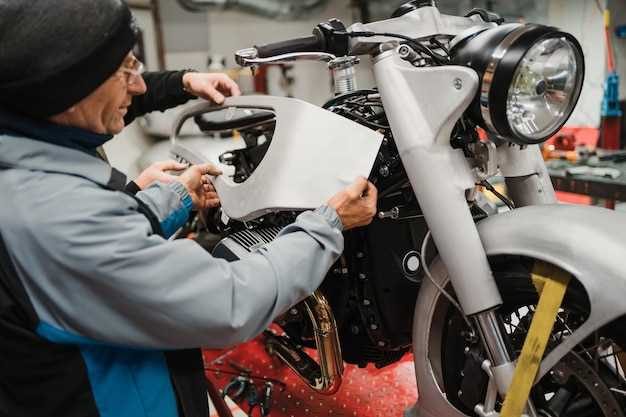
Best Practices for Long-Term Motorcycle Preservation

Maintaining a motorcycle in optimal condition over an extended period of storage is crucial for both performance and longevity. Understanding the best practices for long-term motorcycle preservation can save you time and money, ensuring that your bike remains ready for the road when you are. This guide is designed to provide practical tips and techniques for properly storing your motorcycle, so that it can withstand the rigors of inactivity and retain its value.
Proper storage involves more than just putting a cover over your motorcycle and leaving it in the garage. It requires meticulous preparation and a series of steps that address various aspects such as fuel systems, batteries, tires, and overall cleanliness. Failure to follow these best practices can lead to corrosion, flat spots, and even engine damage, making it essential to take the necessary precautions.
In this comprehensive guide, we will explore the essential steps for ensuring your motorcycle remains in prime condition. From choosing the right storage environment to performing essential maintenance tasks, you will discover how to preserve your bike effectively. By following these guidelines, you can protect your investment and enjoy peace of mind, knowing that your motorcycle is ready for future adventures.
Preparing Your Motorcycle for Long-Term Storage

Properly preparing your motorcycle for long-term storage is essential to ensure its longevity and optimal performance when you return to riding. Start by cleaning the motorcycle thoroughly, removing dirt, grime, and any road debris. This helps prevent corrosion and damage during the storage period. Pay special attention to the engine, wheels, and undercarriage.
Next, change the oil and oil filter. Old oil can contain contaminants that may harm engine components over time. Refill with fresh oil to keep the engine lubricated and protected from rust.
Fuel treatment is crucial; fill the tank to prevent moisture buildup and add a fuel stabilizer. This preserves the fuel’s integrity and prevents it from degrading while in storage. Run the engine for a few minutes to circulate the treated fuel throughout the system.
Disconnect the battery to prevent it from draining. Consider using a battery maintainer or trickle charger to keep the battery charged during storage. If possible, remove the battery and store it in a cool, dry location.
Check and inflate the tires to the recommended pressure. Ideally, elevate the motorcycle off the ground using a center stand or paddock stands to prevent flat spots on the tires.
Cover the motorcycle with a breathable cover to protect it from dust and moisture while allowing air circulation. Ensure that the storage area is dry and maintained at a stable temperature to avoid drastic changes that could affect the bike.
Finally, review and document any key details about your motorcycle or maintenance that may need to be attended to before riding again. Proper preparation will help ensure a smooth transition back to the open road when you’re ready to bring your motorcycle out of storage.
Choosing the Right Storage Environment for Your Motorcycle
Selecting an appropriate storage environment is crucial for long-term motorcycle preservation. The right conditions can prevent deterioration, rust, and mechanical issues that arise from improper storage practices.
The first consideration is temperature. Aim for a climate-controlled area where temperatures remain stable, ideally between 50°F and 70°F (10°C to 21°C). Extreme heat can cause tire damage and fuel degradation, while excessive cold can lead to battery failure and fluid thickening.
Humidity control is equally important. High humidity levels can lead to rust and corrosion on metal components. An ideal humidity range is between 40% and 60%. Use a dehumidifier if you live in a humid climate, or place silica gel packets around the storage area to absorb excess moisture.
Light exposure, particularly UV rays, can fade paint and damage plastics. Choose a storage location that is dark or partially shaded. If indoor storage isn’t an option, use a high-quality motorcycle cover that provides UV protection.
Additionally, ensure proper ventilation in the storage area. Stagnant air can contribute to mold growth and unpleasant odors. A well-ventilated space helps circulate air and keeps the motorcycle dry, reducing the risk of corrosion.
Finally, the flooring of the storage environment matters. An elevated, dry surface is ideal. Avoid placing your motorcycle directly on concrete, as this can cause moisture to seep into tires and lead to flat spots. Use a motorcycle mat or plywood to create a barrier between the tires and the floor.
By carefully selecting the right storage environment, you can significantly enhance the longevity of your motorcycle and ensure it remains in excellent condition for years to come.
Maintenance Tips for Motorcycles in Storage

Proper maintenance is essential for preserving the condition of a motorcycle during storage. Whether you’re storing your bike for a season or an extended period, following specific guidelines can help prevent deterioration and ensure its reliability when you’re ready to ride again.
First, ensure that the motorcycle is thoroughly cleaned before storage. Remove any dirt, grime, and bugs from the exterior, as these elements can damage the paint and chrome over time. Pay special attention to the undercarriage and wheel areas, as road salt or debris can lead to corrosion.
Next, perform a complete fluid change. This includes the engine oil, coolant, and brake fluid. Fresh fluids protect the internal components from moisture buildup and corrosion. Additionally, consider adding a fuel stabilizer to the tank. This prevents fuel degradation, which can cause starting issues when you bring your motorcycle back into service.
It’s crucial to maintain the battery during storage. If possible, remove the battery and store it in a cool, dry location. Use a battery tender or maintainer to keep it charged. If you choose to leave the battery in the motorcycle, ensure it’s fully charged and disconnect it to prevent drain.
Check the tires for proper inflation before storing your motorcycle. Low-pressure tires can develop flat spots over time. If storage lasts for several months, consider elevating the motorcycle on a stand to reduce pressure on the tires. Alternatively, rotate the tires occasionally to distribute weight evenly.
Cover your motorcycle with a breathable cover to protect it from dust, moisture, and potential scratches. Avoid using plastic covers, as they can trap moisture inside and promote rust. Ensure that the storage area is well-ventilated and free from extreme temperature fluctuations.
Lastly, consider conducting a thorough inspection of all components periodically while the motorcycle is in storage. Check for signs of pests, corrosion, or damage, and address any issues immediately to ensure that your motorcycle remains in optimal condition for future rides.